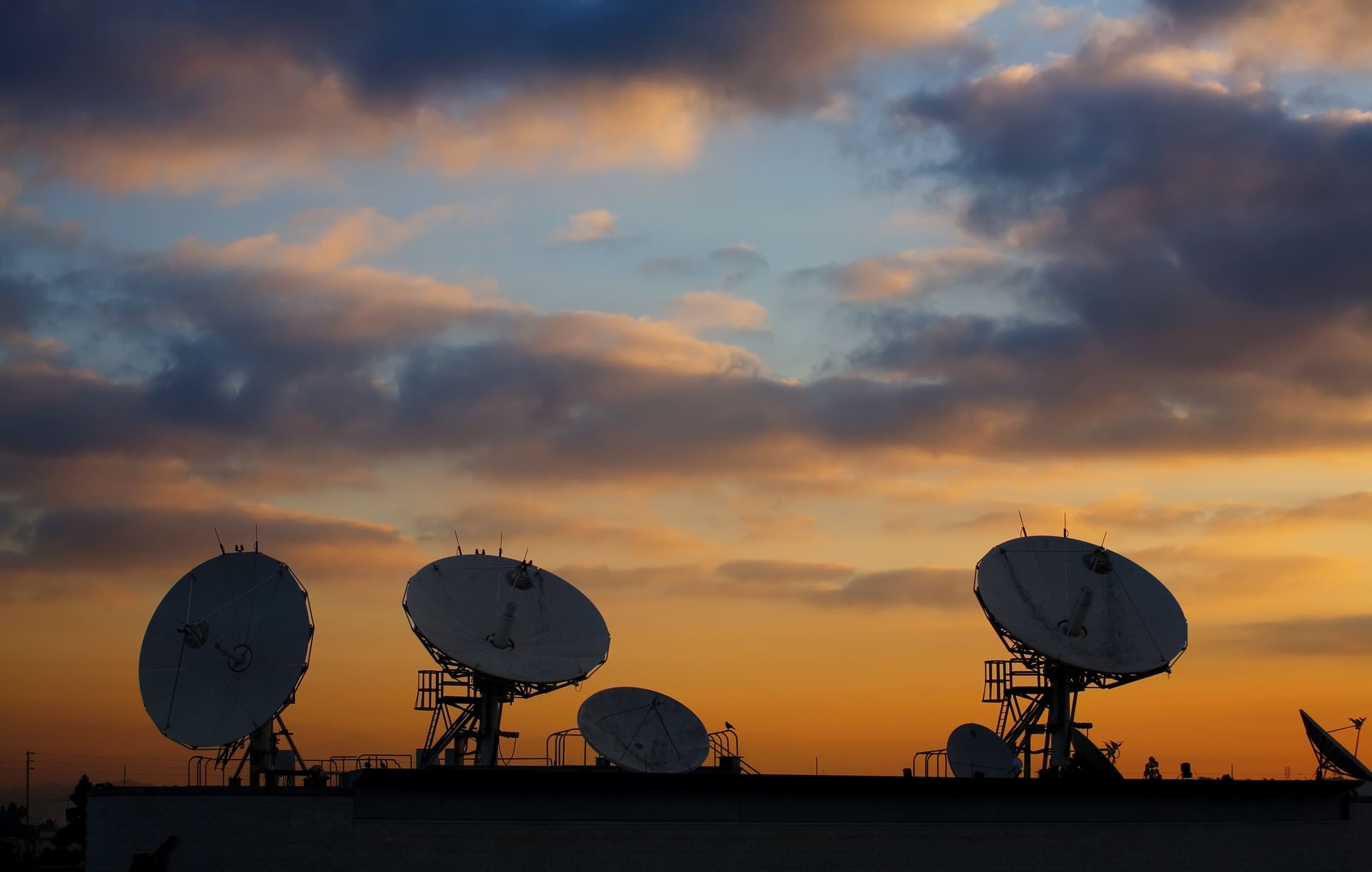
Low Earth Orbit (LEO) Satellite
Low-latency, secure satellite connectivity for critical applications
Low Earth Orbit (LEO) Satellites are in orbit at altitudes between 500 to 2,000 kilometres. For complete Earth coverage and due to their limited (momentary) Field of View (FoV), a high number of satellites are required. Unlike GEO satellites, which are stationary relative to the Earth’s rotation, LEO satellites at 1000Km altitude have an orbital velocity relative to the Earth of about 7.3km/s.
On the ground, this means 2 to 3 antennas must be provided for tracking and satellite changeover. However, due to the reduced gain requirement these antennas are smaller than GEO satellite antennas – typically having a maximum diameter of 2.4m and using both Ka- and Ku-bands.
With low cost, ease of maintainability, small form factor and extended bandwidth all expected requirements for LEO ground segment equipment, ETL has a range of products designed to fit these needs, depending on the antenna hub requirements. ETL’s latest introduction, the Genus chassis, is a compact common chassis with a range of functions, broad frequency ranges and a scalable design to fit into small and large teleports.
The proposed applications fall into two categories:
Broadband internet access direct to end users/consumers
For latency critical applications e.g. Financial transactions, autonomous cars, remote video surgery etc LEO’s will be the first choice as the round-trip latency of a LEO satellite is roughly 10 times lower than a GEO satellite.
Enterprise and Government
As some planes in some LEO constellations are being laser linked this gives the possibly of a highly secure link independent of the internet. Ideal for private enterprise and government communications.
Applications
FAQs
LEO satellites operate at altitudes between 500 to 2,000 km, orbiting the Earth much faster than GEO (Geostationary) satellites, which are stationary relative to Earth. LEO satellites have an orbital velocity of around 7.3 km/s and require a constellation of satellites to provide global coverage.
Due to their fast orbital speed and limited Field of View (FoV), 2 to 3 ground antennas are needed to track and maintain connectivity with the LEO satellites. These antennas are smaller than GEO satellite antennas, with typical diameters of 2.4m, and they operate in Ka and Ku bands.
LEO satellites offer much lower latency compared to GEO satellites, making them ideal for applications where real-time communication is essential, such as financial transactions, autonomous vehicles, and remote video surgery. LEO’s round-trip latency is about 10 times lower than that of GEO satellites.
LEO satellites, especially those in constellations with laser-linked planes, can provide highly secure communication channels independent of the internet. This is beneficial for private enterprises and government communications requiring enhanced security.
ETL Systems offers a range of products designed for LEO ground segment needs, including the Genus chassis. This compact, scalable chassis supports a broad frequency range and various functions, making it suitable for small and large teleports, ideal for broadband internet access and secure enterprise applications.

Get in touch
Whether you’re starting a new project or need expert guidance, we’re here to find the perfect solution for your needs. Reach out to us now and start the conversation!
